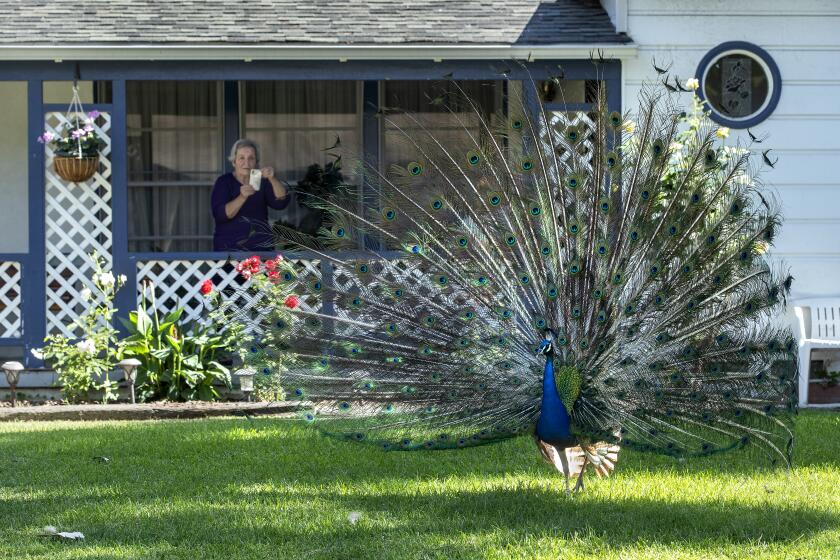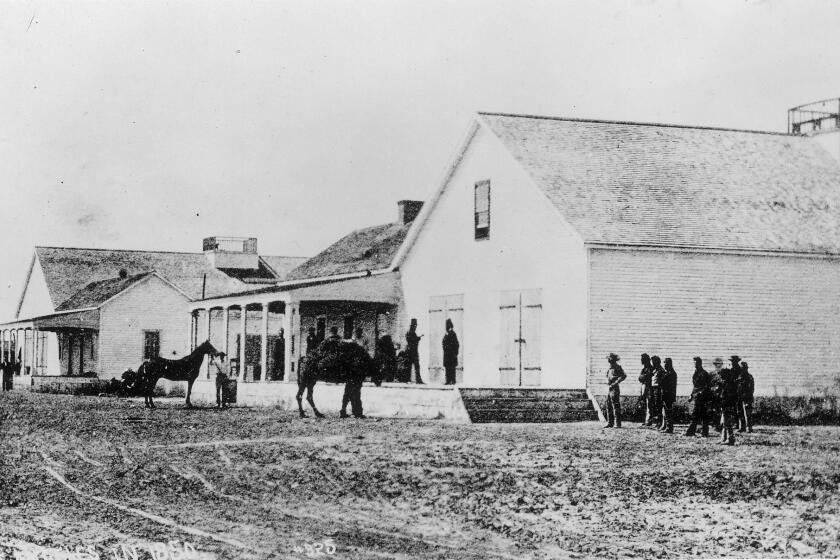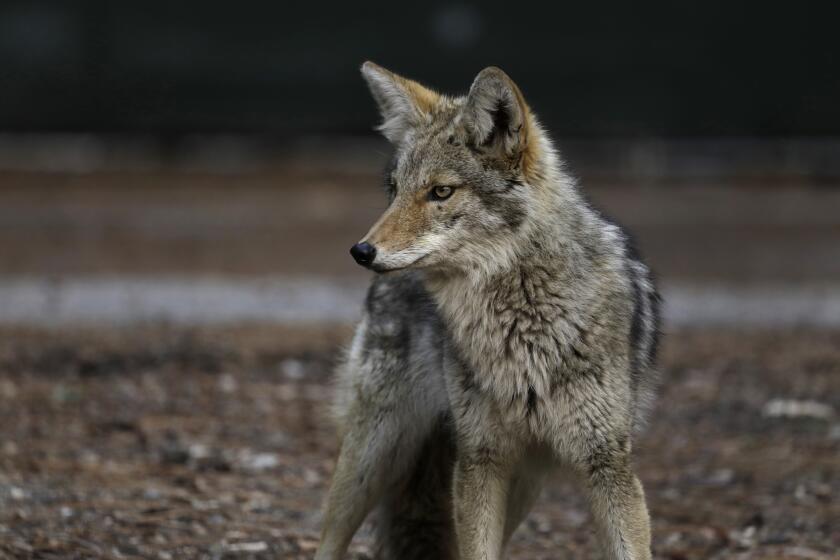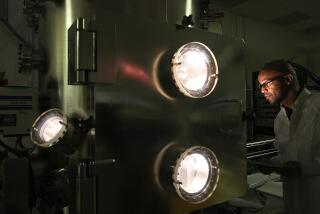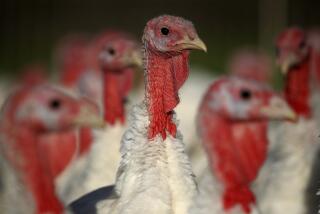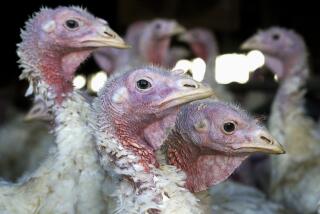Turkeys are trashing a NASA research center in Silicon Valley, so they’re getting the boot
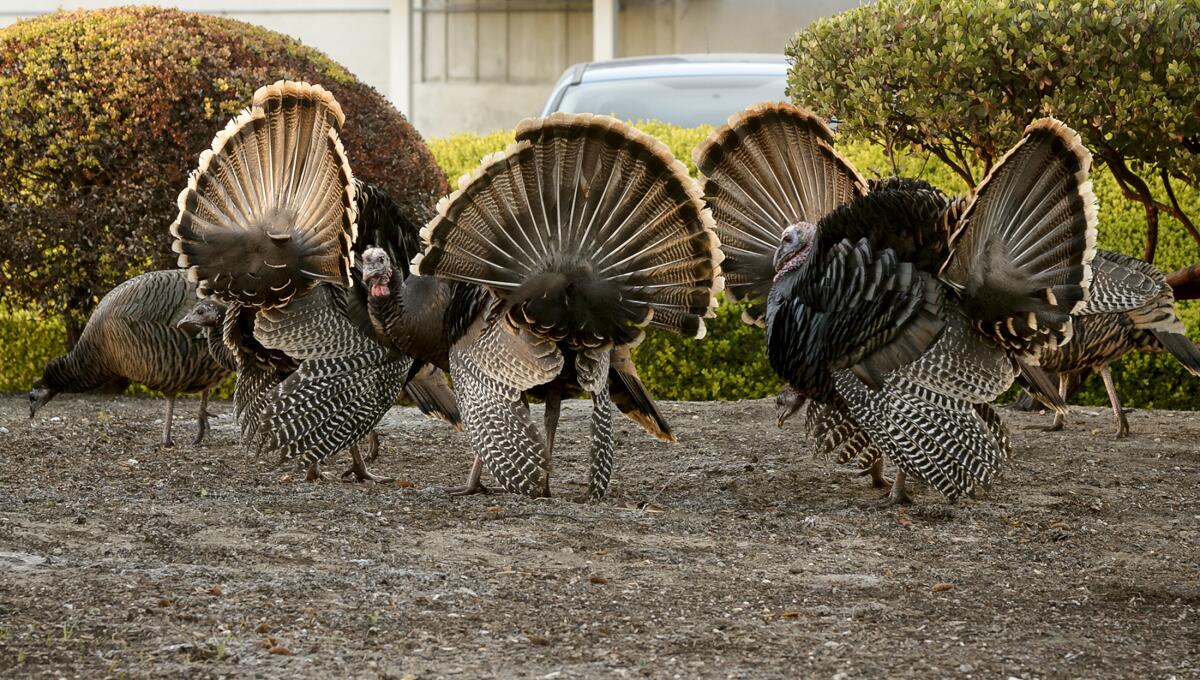
NASA researchers in Silicon Valley are done talking turkey. They’re taking action.
A flock of turkeys that has taken up residence at the Ames Research Center in Mountain View has become so destructive that wildlife officials have hatched a plan to move them elsewhere.
Though the birds have lived there for several years, a group of them has been wreaking havoc, officials with the U.S. Department of Agriculture said.
Cars, gardens, even people have fallen victim to the birds’ aggression. The flock of about 18 unruly birds has disrupted flights at nearby Moffett Federal Airfield, blocked traffic and made a mess with their droppings, the Mercury News reported.
The birds are running amok not far from some of the world’s top minds, who are researching aeronautics, exploration technology and science at the NASA facility.
Although the federal space agency said in a statement that the growing population of turkeys poses “minimal impact to the NASA community,” officials confirmed that the birds were being moved to an ecological reserve “to roam freely.”
“This measure protects the safety and well-being of the turkeys, as well as the Ames community and workforce,” NASA said in the statement.
Their feathery displays adorn and agitate a swath of the San Gabriel Valley, but peacocks may soon face the wrath of the Board of Supervisors.
It appears people have been feeding the birds, despite a “no feeding the wildlife” policy at the site, according to Tanya Espinosa, a Department of Agriculture spokesperson. About 30 turkeys are regularly seen in the area.
For all animals, feeding creates a link between humans and food, and they “often become more aggressive towards humans in their search for a meal,” Espinosa said in an email.
Now there’s a plan to trap the nuisance fowl and drive them to the roughly 3,000-acre San Antonio Valley Ecological Reserve, where they will presumably live out their days, according to officials with the California Department of Fish and Wildlife, which is providing the release site.
If it sounds unusual — well, it is.
“Normally we don’t go around relocating turkeys,” said Ken Paglia, a spokesperson for the wildlife agency. But in this situation, he said, it’s the right call.
Time is of the essence. It’s key to nab the turkeys before they begin nesting, or they’ll grow in ranks. But it’s also important to allow them to nest at the correct time.
“This will help ensure that the young turkeys don’t learn from older turkeys in regard to damaging cars and landscaping,” Espinosa said.
Reggie the alligator and Bubbles the hippo captured the public imagination. Civil War-era camels were a spectacle. And the feral parrots and Catalina bison are just as Californian as any native species at this point.
But there’s a problem: When people feed the wild birds, it interferes with the complex trapping efforts, Espinosa said.
To trap them, certain areas are baited with corn or similar food for several weeks “to encourage the turkeys to congregate in specific areas,” she said.
Once the animals come to the site several days in a row, a walk-in corral trap is built with a detachable funnel entrance that permits the birds to go in but makes it more difficult for them to find their way back out.
The trap is baited, and the detachable funnel is left off. After the turkeys habitually go into the trap to feed, the funnel is put on.
Once corralled, the birds will undergo a blood draw, as well as an oral and cloacal swab. They will be banded, their age and sex data will be collected, and they will be tested for diseases.
Finally, the birds will be placed individually into “turkey boxes” and transported to their new home. Measures will be taken at each step “to ensure the safety of the birds and reduce any stress,” Espinosa said.
One of the main reasons the USDA is taking the lead on the relocation is that the department employs licensed trappers “whose job it is to professionally and safely and humanely trap animals,” Paglia said.
I’ve sprayed our yard with wolf urine, boarded up the doggy door and posted flashing red ‘predator eyes’ on fences and trees surrounding my house.
Every year, CDFW gets complaints about turkeys. Usually they’re ripping up property with their beaks.
“It’s not the biggest issue out there, but it’s definitely an issue,” Paglia said. “It’s something that we deal with on a somewhat consistent basis.”
Moving wildlife is not typically the department’s course of action; it requires substantial resources of time and manpower, and sometimes it just shifts the problem elsewhere.
It can be “problematic,” Paglia said. “We don’t want to make them somebody else’s problem. And when I say that, I’m not being specific to this situation. I’m just talking about wildlife in general.”
More to Read
Sign up for Essential California
The most important California stories and recommendations in your inbox every morning.
You may occasionally receive promotional content from the Los Angeles Times.

